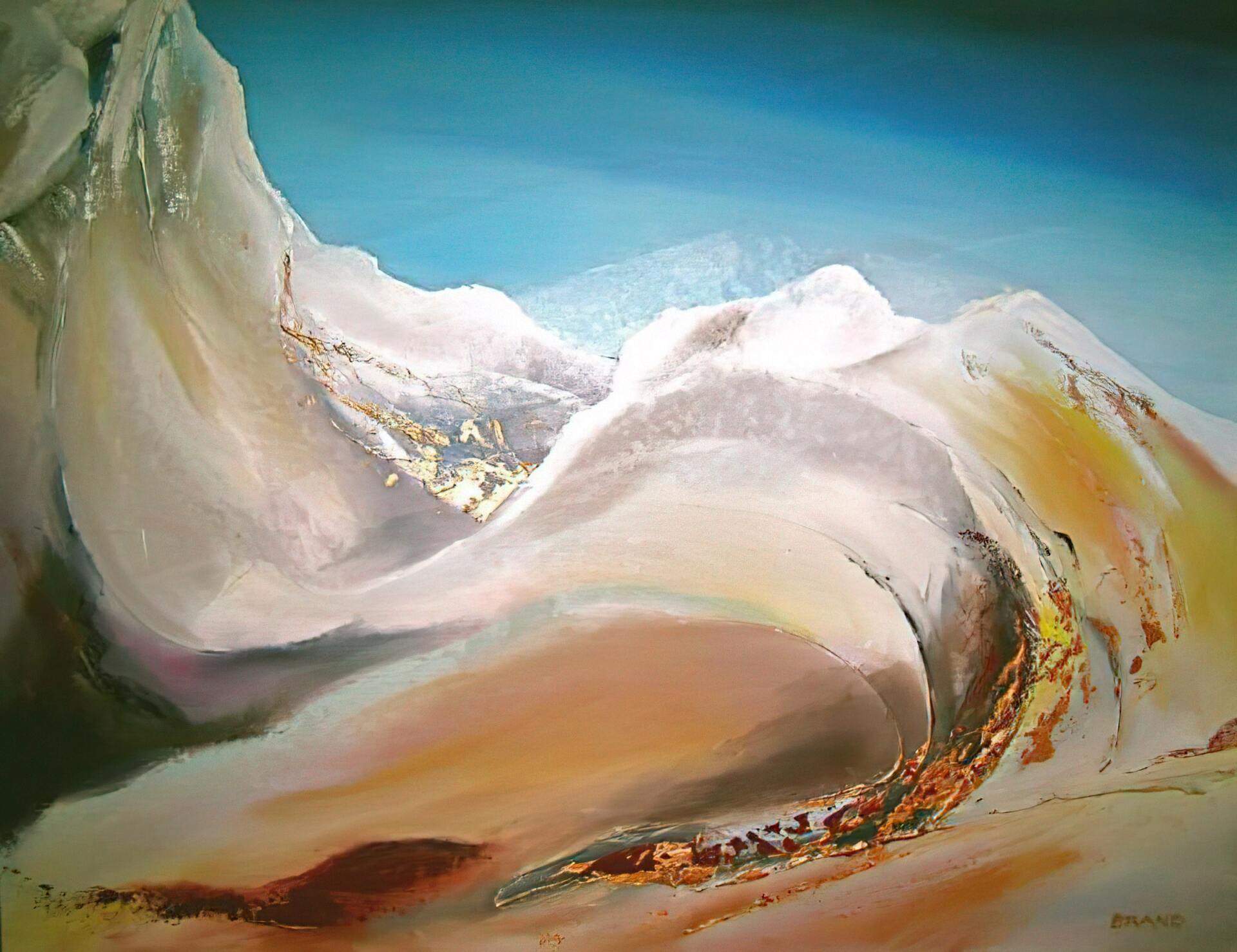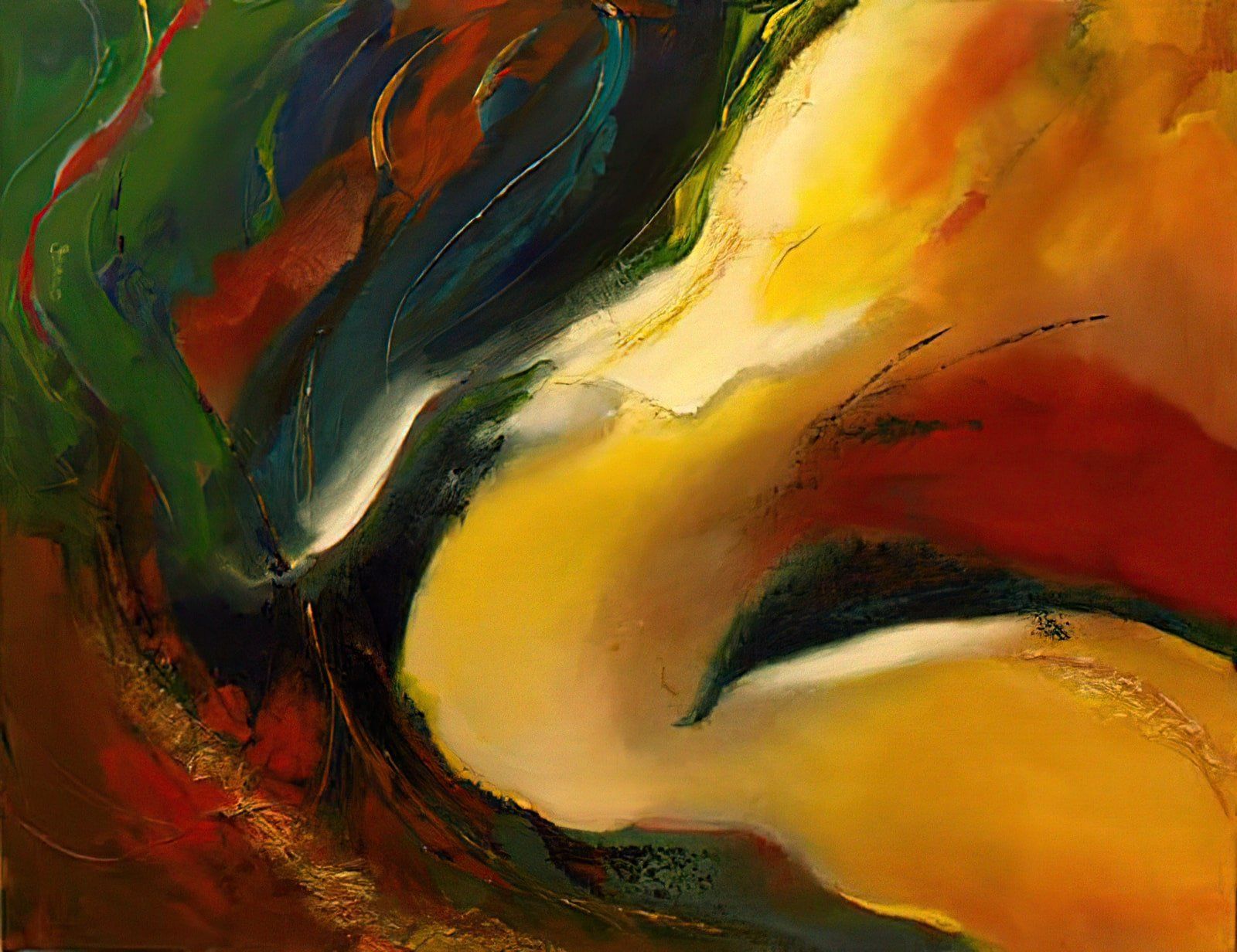An Environmentalist Comes
Out of the Spiritual Closet
Artwork by Sandy Brand
In the late 1980s North America seemed to wake up to the environmental crisis for the first time, and the first big wave of “green” books came onto the scene. As part of this I was commissioned by a large Canadian publisher to collaborate on writing a book for young adults with an environmental organization called Pollution Probe. The result, The Canadian Junior Green Guide, came out in 1989 and became a Canadian bestseller.
A typical starving author, I was thrilled with the book’s success. As a long-time, dedicated environmentalist, I was even happier. But beneath the joy and excitement, something much darker lurked. At some level I was afraid the burgeoning enthusiasm for everything green was merely another passing fad. As a young woman in 1971 I had coordinated the first Earth Week activities ever held at the University of New Mexico – and I had then watched in desolation over the next few years as that first passionate flame for saving Mother Earth flickered and, finally, burned out.
I sensed history was about to repeat itself, and in spite of all the buzz and excitement about the book, I started to become depressed. Adding to this sense of despair was the sheer weight of the knowledge I’d gained while researching the book. Things were much worse for our planet than even a long-time environmentalist like me had known.
Realizing that many other people must also be feeling overwhelmed, Pollution Probe and I began work on a book that would help people begin the process of becoming “greener” by focusing on just one simple aspect of their lives – the kitchen. As excited and hopeful as I was in the beginning about writing what would become The Kitchen Handbook: An Environmental Guide, I became even more depressed as I researched the project. Once again I was steeped in grim statistics – the countless tons of pesticides that were being dumped onto our land, the depletion of the fish in our oceans, the carcinogens seeping into our drinking water, and – possibly even worse – the way our heedless belief that we were entitled to cheap bananas and coffee was forcing plantation workers to clear acres of rain forest so that they could grow the food they needed to supplement their starvation wages.
Fighting for Mother Earth
In some ways, being immersed in this bleak information made me more committed to activism than ever. In others, it was all too much. I simply couldn’t bear it. And even more distressing was the fact that I could see that the massive media blitz on the environment wasn’t making people change. A trip to the grocery store showed that something as simple as bringing a reusable bag – undoubtedly the easiest, least inconvenient way in the world to make a big environmental impact – was beyond the vast majority of us.
About this time, the publishers even became worried that the new book wouldn’t do well and, in hopes of convincing potential readers that eating low on the food chain and using less electricity was personally beneficial, they decided to put a big, red banner above the title that said “SAVE MONEY WITH”! Now, that really was depressing!
But at the same time something very positive was happening in my career. I was becoming known as an environmental spokesperson and was being interviewed frequently in the media. What’s more, I was being asked to speak at conferences and, halleluiah, getting paid for it. This was very significant for me because it is extremely difficult for authors of non-fiction who live in a small population country like Canada to make a living. The exception to this comes when an author writes almost exclusively on one particular topic and becomes “known” as an authority on it. Suddenly, this was happening to me and, almost unbelievably, it was happening in a way that might allow me to fulfill my dream of making a real impact on environmental issues.
I found myself wavering between the kind of hope I’d feel when I’d speak at a school and see eager little hands wave in response to questions like “What can you do to save the environment?” and the abject hopelessness I felt when I would get home and have to face another scientific abstract on the effects of ozone depletion.
Shakti and Sophia
Slowly, the hopelessness was beginning to win. As it did, I turned increasingly to my other great passion, researching the lives of mystics and the divine spiritual force that triggered their mystical experiences. Depending on the spiritual tradition these mystics came from, they gave this spiritual force names that ranged from Holy Spirit and Sophia to dumo fire, jeng chi, and kundalini-shakti. But I soon discovered that, regardless of what these great spiritual teachers called this force, what they experienced was astonishingly similar: From George Fox to St. Paul, they all described having visions of light, sensations of divine love, and an unshakable certainty that they were in some way united with the Divine.
Often they even described their experiences using remarkably similar imagery. Thus, the 12th century Christian visionary St. Hildegard of Bingen would describe an experience associated with the Holy Spirit saying, “…the heavens were opened and a blinding light of exceptional brilliance flowed through my entire brain. And so it kindled my whole heart and breast like a flame…” And Panchastavi, an 8th century yogi, would describe the awakening of kundalini-shakti as a light like a billion suns that glowed in “the crown of the head like the luminous white shine of the moon, and in the heart like the never setting splendorous sun…
About this time I had a mystical experience of my own that changed everything. Because so much of my research and focus had been on yoga and other Eastern traditions, I thought of it in terms of being a kundalini experience. Although it was nothing on the caliber of the experiences of the great mystics, it had a profound effect on me. It occurred one morning while I was attending a spiritual conference in California. Just before dawn broke, I had gone out onto the beach to do Tai Chi. With my eyes focused on the horizon, I began to move slowly through the set of positions. By the time I got to the flowing movement known as “Wave Hands Like Clouds”, something in my perception began to shift. The line separating sky and water began to dissolve. Sky and water became one, the water became one with the sand, and slowly all boundaries, all lines of demarcation dissolved. Suddenly, I could see, actually physically see, that all edges were illusion. Everything that had once appeared to be separate to me was in fact One – one vast, limitless expanse of pulsating life energy. Intense sensations began to rush through my body, and my heart exploded with love for this Oneness and everything it contained.
The Divine Feminine Fire
Somehow I managed to maintain my focus and finish the Tai Chi set. But there was so much of this light-filled energy moving through my body, I had to run. I began to jog along the narrow, sun-bleached board walk that wound through the grass above the dunes and up into the pines. Everything I saw, every rock and grain of sand, glowed with a radiant light. The green of the dune grass had become luminescent; the needles on the pine trees seemed to vibrate with a life of their own; the very air seemed to be filled with a life-giving force. This light, this radiance pulsed through every single thing I saw; it pulsed around me and through me. It was part of me; I was part of it, and I was part of everything.
This experience soon brought me to a crossroads in my life. I realized I could continue being an environmental writer and probably have some measure of financial security doing it. Or, once The Kitchen Handbook was finished, I could come out of the spiritual closet so to speak and write books about mystical experience. Once I did this, I knew that many people who were important to me – especially publishers, editors, and fellow writers – would no longer think of me as a serious writer; they’d see me as yet another new age flake.
Yet this was clearly the path I was going to have to follow. It seemed, ironically, that I was going to have to give up focusing directly on environmental issues to do the best work I could for the environment. Even though I believed, and still believe, the work environmental activists do is critically important, my “job” was going to be to write about spiritual experience and the transformation of consciousness – the transformation that allows individuals to see that we all One with each other, with all living beings, and with the earth itself.
This article originally appeared in the Religious Society of Friends’ publication What Canst Thou Say as “Consciousness and Creation”.
References
Flanagan, Sabina. Hildegard of Bingen: A Visionary Life. London and New York: Routledge, 1989.
Krishna, Gopi. Secrets of Kundalini in Panchastavi. New Delhi, India: Kundalini Research and Publication Trust, 1978.
Degler, Teri. The Divine Feminine Fire: Creativity and Your Yearning to Express Your Self, Pennsylvania: Dreamriver Press, 2010.




